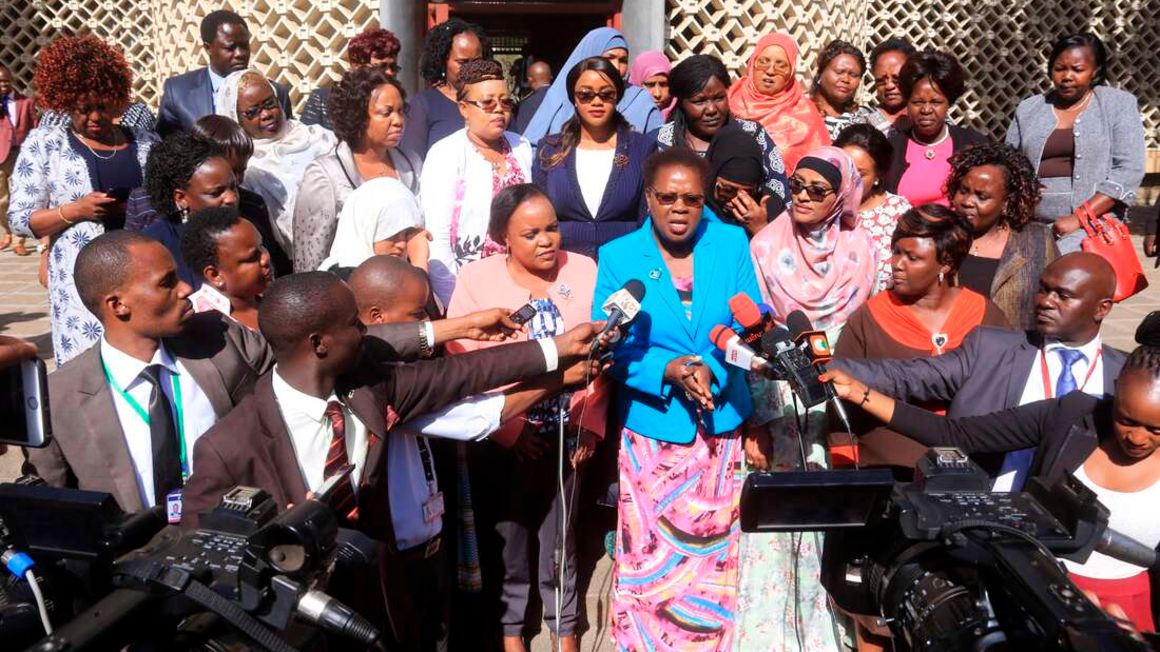Women legislators address the media outside Parliament Buildings in Nairobi on February 27, 2019 after a vote on the two-thirds gender bill flopped for a record fourth time following a quorum hitch. PHOTO | JEFF ANGOTE | NMG Men dominate Kenya’s economic, political and social spheres despite women making up the majority of the population.
The lack of empowerment has prevented women from taking up top leadership positions like their male counterparts.
With limited opportunities, their roles have been reduced to farms where they perform labour-intensive jobs to sustain their livelihoods.
Nowhere is the disparity more visible than in the political arena where men ran the show. And despite the number of women parliamentarians growing over the years, this is a small proportion compared to their population.
This is backed by the latest United Nations Development Programme (UNDP) and the Government of Kenya report titled ‘Consolidating Democratic Dividends for Sustainable Transformation in Kenya’ that shows only 21.78 percent and 30.88 percent women sit at the National Assembly and Senate respectively compared to Rwanda, whose women legislators account 61.25 percent.
Kenya also trails Burundi (38 percent), Tanzania (36.9 percent), Uganda (34.8 percent) and South Sudan (28.46 percent) in terms of women representation in Parliament.
“Prescribed gender roles, patriarchal attitudes, structural barriers, limited financial resources, non-compliance with the regulations that are gender-responsive, limited training on navigating the governance landscape, violence against women and girls and limited access to media coverage disadvantage women, reducing the pool of women in leadership and decision-making spaces,” says the report.
The Constitution sought to address gender inequalities at workplaces by offering both men and women equal opportunities.
Section 27 of the Constitution requires the county and national governments to ensure that neither gender has more than two-thirds of public officers, whether elected or appointed.
Under the two-thirds gender rule, the dominant gender should only occupy 66.66 percent of public offices. However, as of September last year, there were 290 men in the National Assembly out of a total of 349 MPs.
This means that the 290 male MPs occupy 83 percent of available seats. In the Senate, the 47 male lawmakers account for 70 percent of the available seats. Affirmative action Ten years down the line, this seems not to be the case as more men occupy top positions in all spheres of life, unlike women.This is why the former Chief Justice David Maraga last year urged President Uhuru Kenyatta to dissolve the Parliament for failing […]
